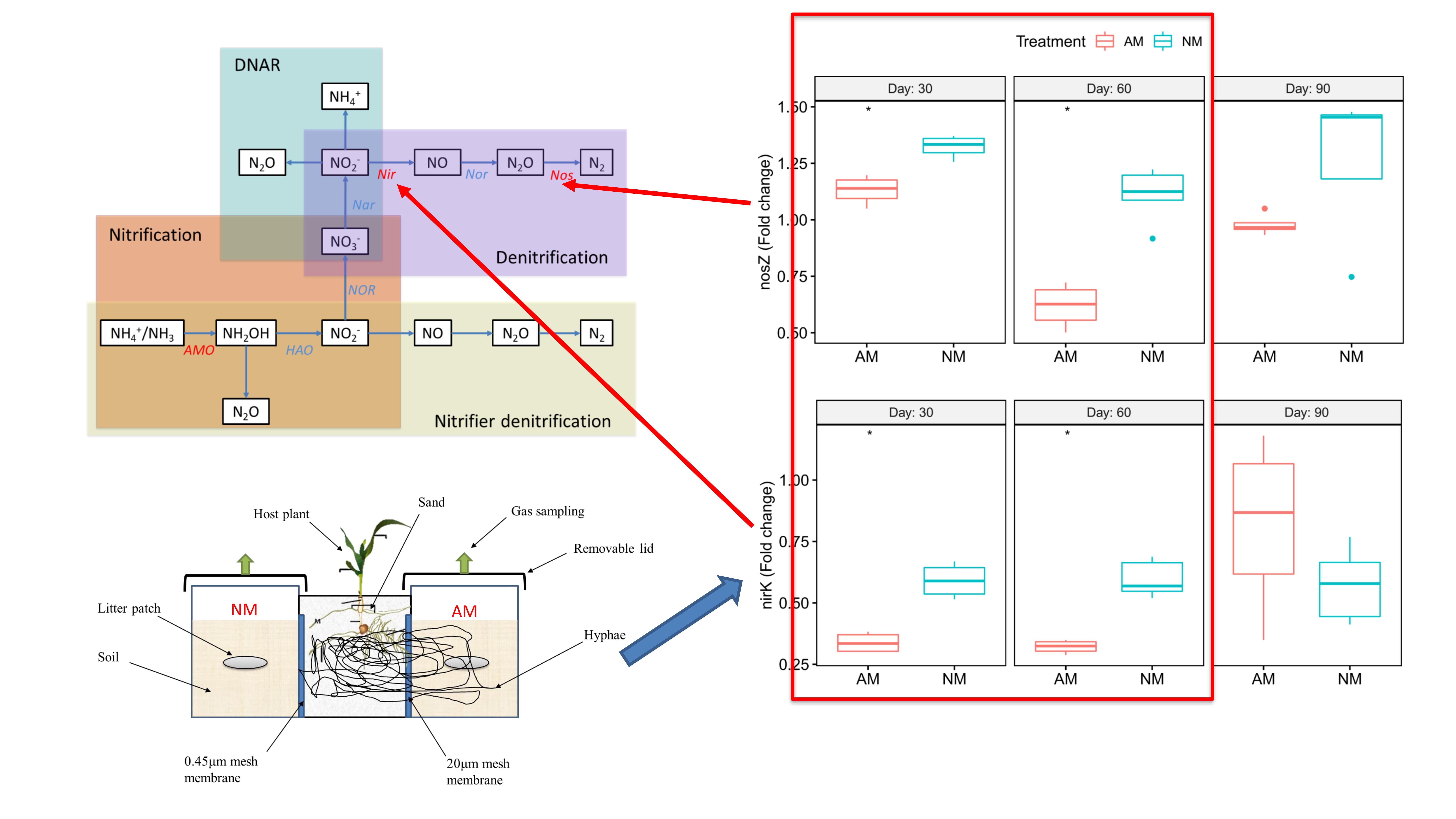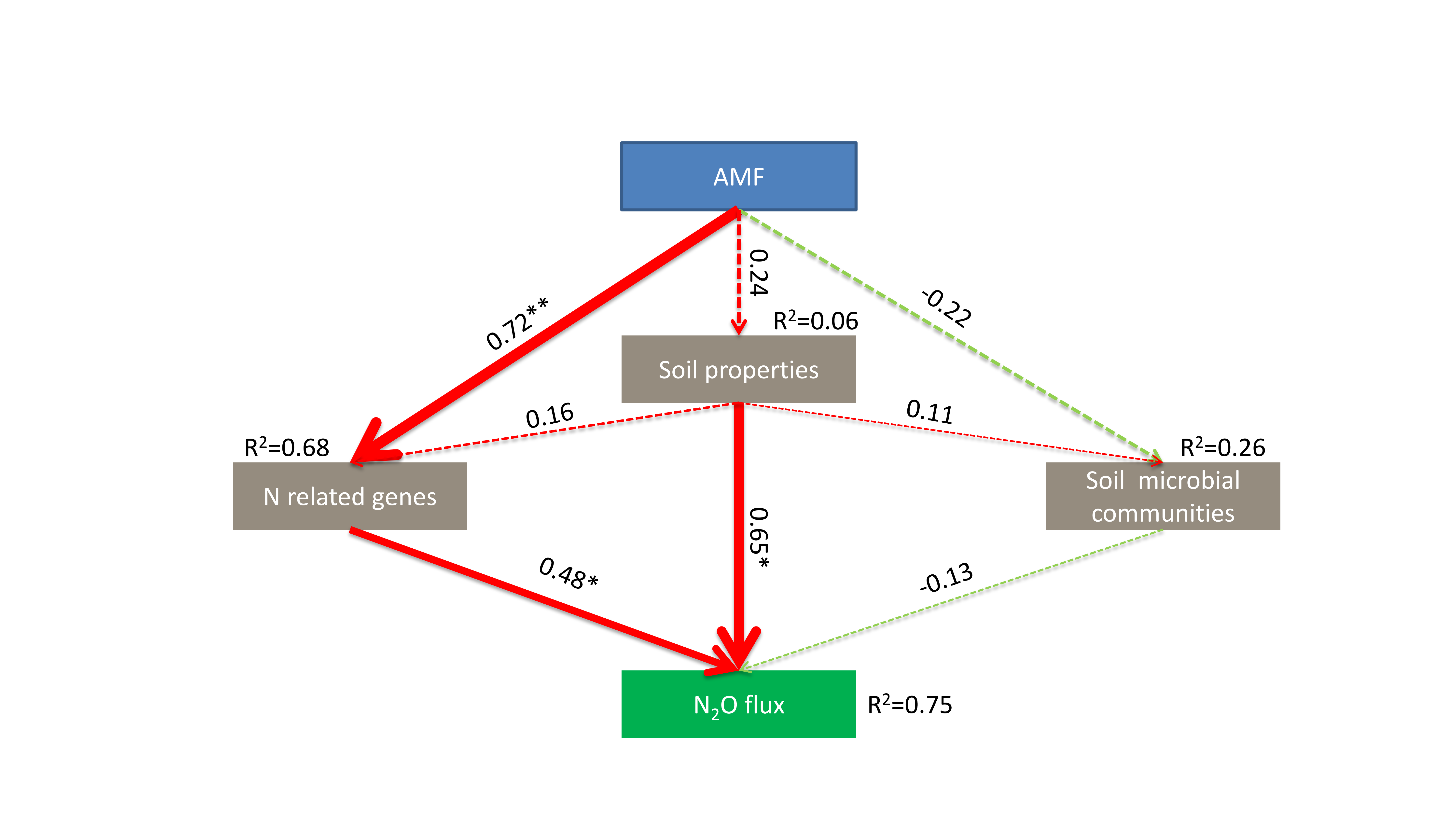
Nitrous oxide (N2O) is one of the most important greenhouse gas causing global warming. At the same time, it also participates in many photochemical reactions in the atmosphere, destroying the atmospheric ozone layer. In terrestrial ecosystems, soil is an important source for N2O emissions. The N2O in the soil mainly comes from the transformation of available nitrogen mediated by various microorganisms.
Arbuscular mycorrhizal (AM) fungus is a widely distributed soil fungus in terrestrial ecosystems, it can enhance the nutrient uptake of the host plant through its hyphae network, improve the host plant's stress resistance, and improve the physical and chemical properties of the soil. It is generally believed that AM fungi themselves do not have the saprophyte ability and are unlikely to be direct producers or consumers of N2O, but they have the ability to absorb active nitrogen in the soil and interact with other soil microorganisms to affect the production of N2O from the soil.
In order to better explore how AM fungi regulate the production and emission of N2O from the soil, researchers from the Kunming Institute of Botany of the Chinese Academy of Sciences (KIB/CAS), based on indoor experiments, set up a microcosm experiment under controlled environment to address this knowledge gap.
In this experiment, two independent soil environments were established, which were either allowed (AM) or prevented (NM) access by AMF hyphae. Soil physicochemical properties, N2O flux, the diversity of bacterial communities, and the abundance of key genes responsible for N2O production were assessed in both treatments over three months.
Results showed that the presence of AMF significantly decreased N2O emissions from agricultural soils in the first month, and the abundance of key genes responsible for denitrification significantly decreased in AM treatments, indicating that the regulation of N2O emissions is transmitted by AMF-induced changes in the denitrification process.
A structural equation model further revealed that AMF indirectly influenced N2O emissions by altering the abundance of N metabolism-related genes, rather than by altering soil chemical properties or the diversity of bacterial communities.
Thus, the research proposed a possible mechanism by which AMF can regulate denitrification activities and therefore N2O emissions from agricultural soils.
Results were published online title "Arbuscular mycorrhizal fungi potentially regulateN2Oemissions from agricultural soils via altered expression of denitrification genes" in Science of The Total Environment.
This work was funded by the Yunnan Fundamental Research Projects and the National Natural Science Foundation of China.



86-10-68597521 (day)
86-10-68597289 (night)

52 Sanlihe Rd., Xicheng District,
Beijing, China (100864)

